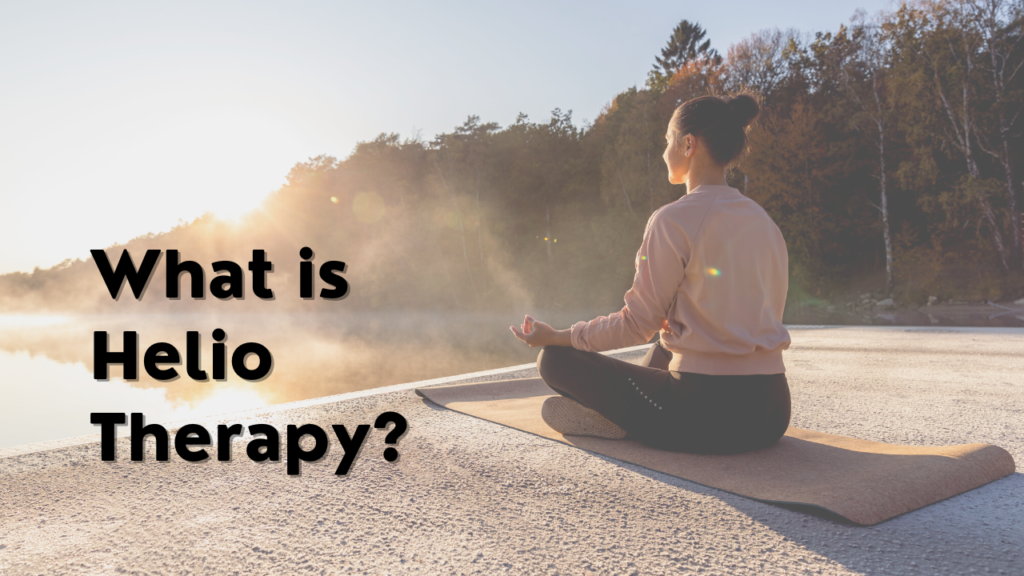In Ayurveda, Heliotherapy, known as “Surya Chikitsa,” is a therapeutic practice done at many Wellness retreats at Prayagraj that harnesses the healing power of the sun. It is believed to balance the body’s doshas (Vata, Pitta, and Kapha) and promote overall well-being. Ayurvedic heliotherapy involves sun exposure during specific times of the day, such as sunrise or sunset, to absorb vital energy and activate the body’s internal healing mechanisms. The sun’s rays are considered a source of Prana (life force energy) and are thought to improve digestion, boost immunity, and enhance mental clarity. This traditional practice is used to address various health concerns and align with Ayurvedic principles for holistic wellness.
Helio therapy is primarily associated with the following potential benefits:
Vitamin D Production: Sunlight serves as a vital catalyst for the body’s production of vitamin D. When the skin is exposed to ultraviolet B (UVB) rays from the sun, it triggers a chemical reaction that synthesizes vitamin D. This nutrient is crucial for various aspects of health, particularly bone health, as it enables the absorption of calcium and supports bone mineralization. Additionally, vitamin D plays a pivotal role in bolstering the immune system, helping to defend against infections and regulate immune responses. Its multifaceted importance extends to overall well-being, impacting mood, cardiovascular health, and potentially reducing the risk of chronic diseases. Adequate sunlight exposure, within safe limits, promotes these essential benefits.
Mood Enhancement: According to the experts of Wellness resort in Prayagraj exposure to sunlight has a profound impact on mood due to its ability to stimulate the production of serotonin, a neurotransmitter often referred to as the “feel-good” chemical. When sunlight enters the eyes, it triggers the brain to release more serotonin, which in turn elevates mood and promotes a sense of well-being. This natural mood enhancement is particularly valuable in addressing conditions like depression and Seasonal Affective Disorder (SAD), where individuals often experience lower serotonin levels and mood disturbances during darker, winter months. Sunlight therapy, or phototherapy, can be an effective treatment, helping to alleviate symptoms of these mood disorders and improve overall mental health.
Skin Conditions: Sunlight exposure is a natural remedy for certain skin conditions, including psoriasis, eczema, and acne. This therapeutic effect is attributed to the presence of UVB (ultraviolet B) rays in sunlight. UVB rays can slow the growth of skin cells and reduce inflammation, making them particularly beneficial for individuals with psoriasis, a condition characterized by rapid skin cell turnover. In the case of eczema, sunlight can help alleviate itching and inflammation. For acne, UVB rays can have a drying effect on excess skin oil and can also possess antibacterial properties. However, caution is essential to prevent sunburn, and medical guidance should be sought for precise treatment regimens.
Circadian Rhythm Regulation: Exposure to natural sunlight serves as a key mechanism for regulating the body’s internal timekeeping system, or circadian rhythm. This synchronization process, particularly when exposed to natural light in the morning, sends signals to the body, indicating that it’s time to be awake and alert during the day. This synchronization enhances the quality of sleep by promoting a consistent sleep-wake schedule and increasing the production of melatonin, a vital hormone for promoting restful sleep. A well-regulated circadian rhythm not only improves sleep patterns but also has a broader positive impact on overall health, affecting mood, cognitive functions, and various physiological processes.
Wound Healing: According to the Ayurvedic Doctors studies indicate that exposure to sunlight may facilitate the body’s wound healing processes. Sunlight, particularly its UVB rays, can trigger the production of vitamin D, which is crucial for the immune system and tissue repair. Additionally, sunlight can stimulate the release of nitric oxide in the skin, improving blood flow to the injured area, which is vital for wound healing. Sunlight’s antimicrobial properties may also help prevent infection in open wounds. However, it’s essential to exercise caution to avoid overexposure to UV radiation, which can lead to sunburn and other skin damage. Consulting with a healthcare professional is advisable for specific wound care guidance.
Conclusion
In conclusion, Heliotherapy, rooted in both traditional practices and modern science, harnesses the healing potential of sunlight. It offers a multifaceted approach to enhancing overall health. From stimulating vitamin D production and mood improvement to aiding skin conditions and possibly expediting wound healing, the sun’s rays have a therapeutic role. However, moderation and sun safety are crucial, as overexposure can lead to adverse effects. Heliotherapy in Ayurveda, in particular, underscores the harmony between nature and well-being, emphasizing the significance of aligning with the sun’s rhythms for holistic health. Consulting healthcare professionals for personalized guidance is advisable to reap the full benefits of this ancient and natural therapy.
